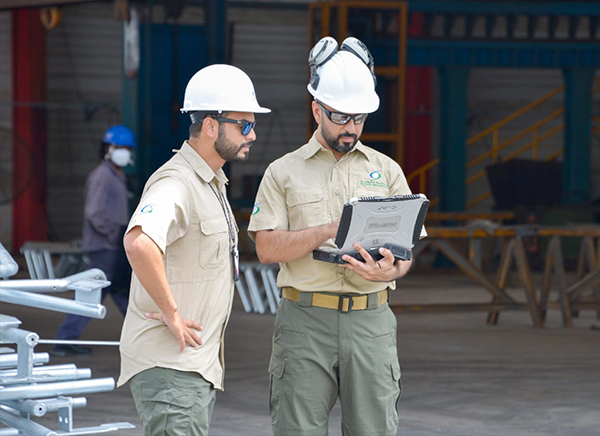
The Environment Agency – Abu Dhabi (EAD), has recently launched ‘Eltezam’ – a new digital system for environmental inspection and compliance evaluation which gives EAD’s inspectors the flexibility to evaluate facilities and projects based on actual on-site activities and operations. The new system allows inspectors to comprehensively review any aspect of an organisation’s activities regarding any potential environmental harm rather than being limited to activities listed on their environmental license.
The introduction of “Eltezam” is a component of EAD’s ongoing initiatives to carry out its regulatory responsibilities by upholding environmental standards in the Emirate of Abu Dhabi. The Agency can lessen environmental harm and continuously update environmental conditions and standards in line with the rate of development seen in the industrial sector or the construction and infrastructure sector, as well as the emirate’s economic growth, by establishing regulatory frameworks in the emirate.
Faisal Al Hammadi, Acting Executive Director of the Environmental Quality Sector at EAD said “The Agency has developed modern technological tools and programmes that ensure compliance by industrial facilities and development projects with environmental laws and requirements. We evaluate and license development projects, infrastructure, and industrial facilities, and commercial businesses in Abu Dhabi with the aim of reducing construction-related environmental impact. This is to ensure compliance with local laws and legislation aligned with best global environmental practices and the environmental, economic and social progress in the emirate of Abu Dhabi.’’
To acquaint its inspectors with the features of the new system, the Agency has hosted several training workshops. It is important to remember that the on-site inspections’ goals include determining how closely facilities and construction projects adhere to environmental regulations. The inspectors look into complaints and reports of environmental accidents, spot operational flaws that could cause environmental problems, and make sure the facilities and projects subject to licencing are aware of these flaws and how to fix them. Additionally, they gather pertinent field data for particular industries, endeavours, regions, and facilities, as well as police environmental compliance, levy administrative penalties, and start-up legal enforcement procedures.
Ahmed Al Waheebi, Unit Head, Compliance and Enforcement, at EAD said “We are very conscious of the nature of rapid economic growth, so we adopt the latest electronic and information systems to help keep pace with this acceleration and achieve sustainable growth. We do this while taking care to reduce the environmental impact of each stage of development – from planning to implementation. The next step is a focus on systems that will rely more on proactive evaluation of projects and facilities, and on self-monitoring, not only to facilitate but to achieve better environmental results.’’
93 sectors licensed by EAD are among the components of the environmental inspection and compliance system. By keeping an eye out for 277 potential environmental infractions, it also evaluates the environmental effects of 38 operational processes to prevent damage from all environmental pollutants across all activities that fall under the Agency’s purview.